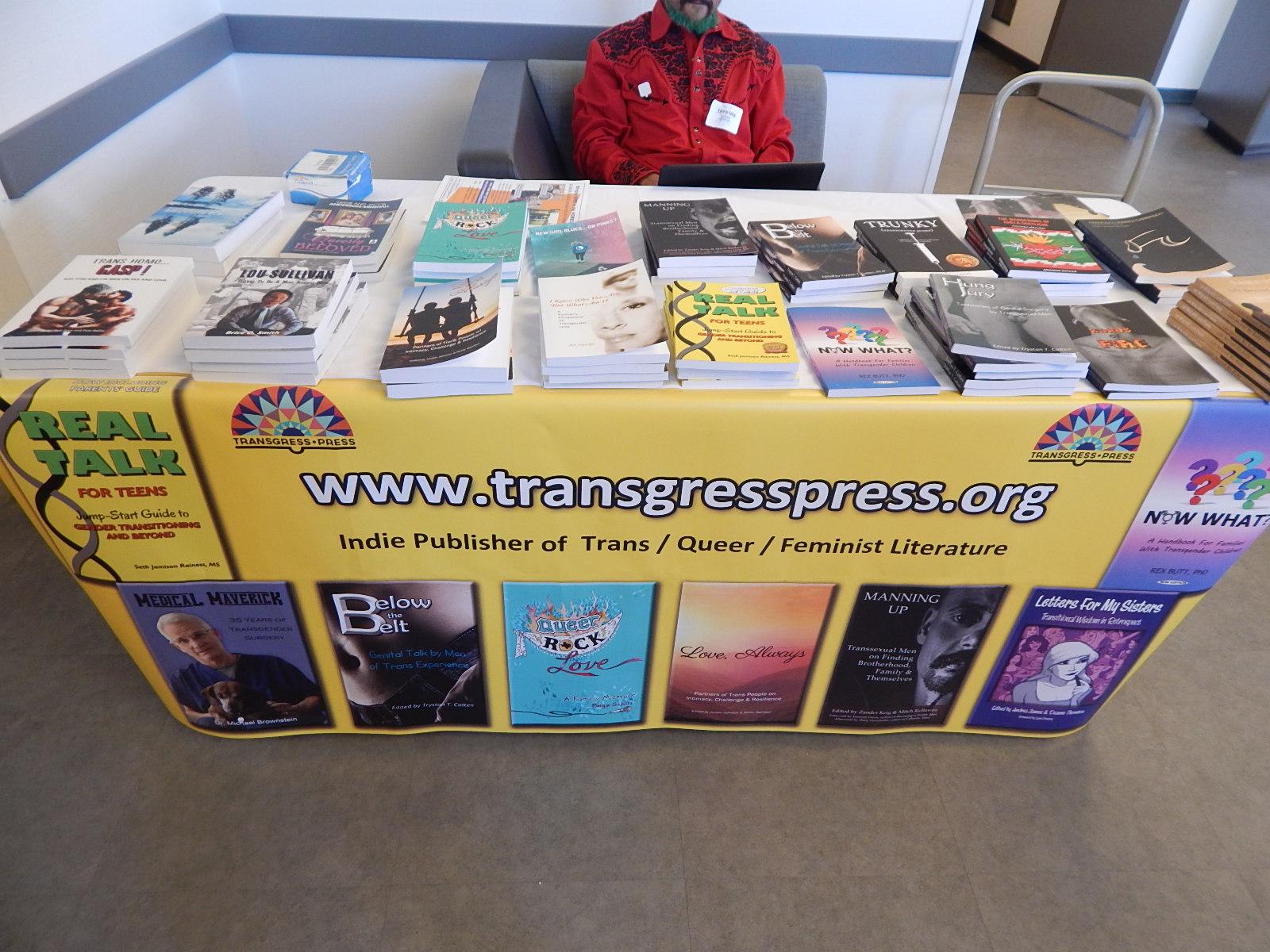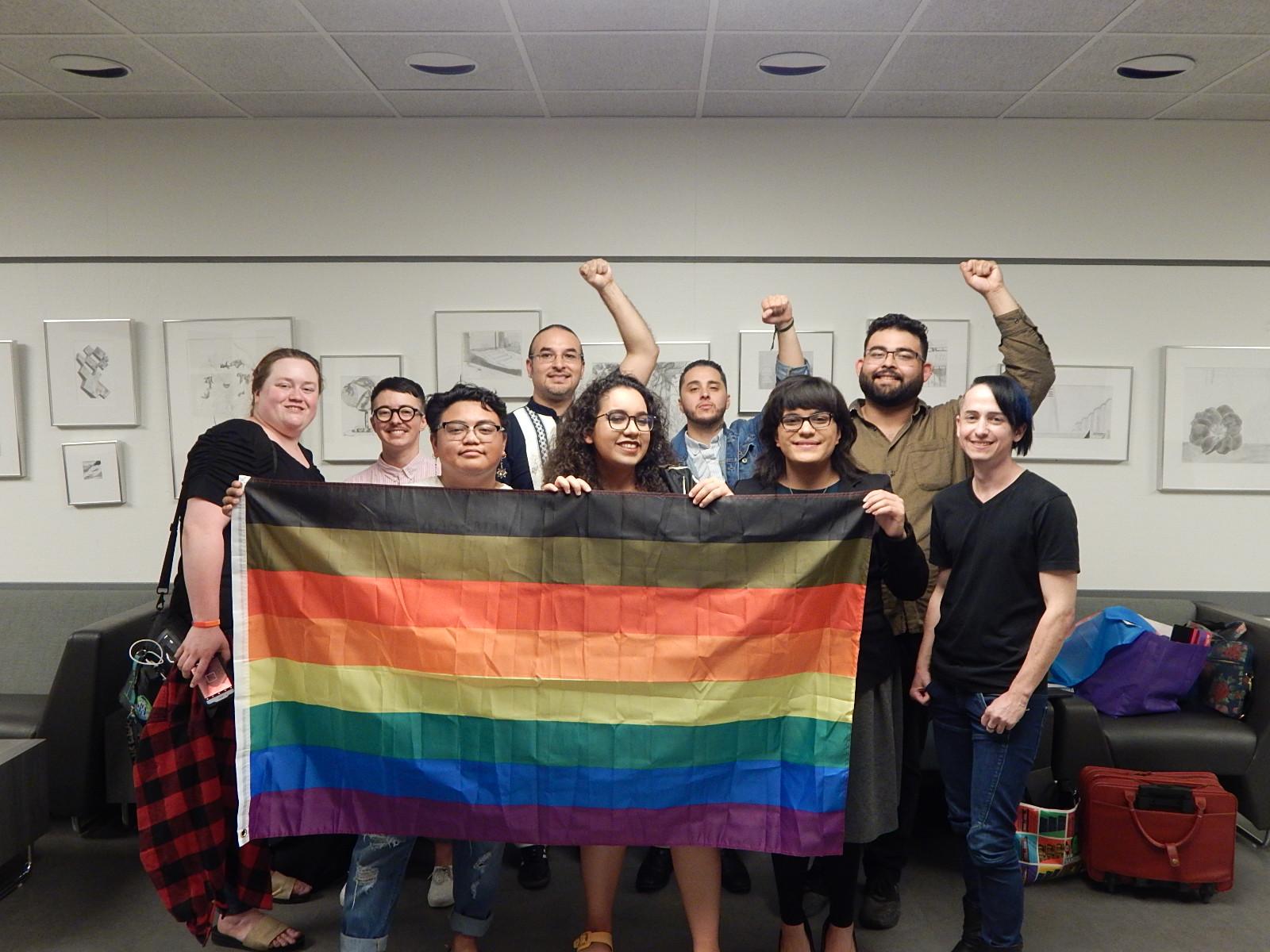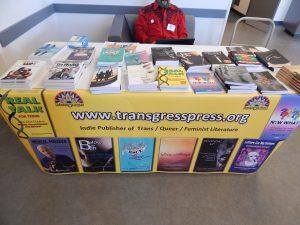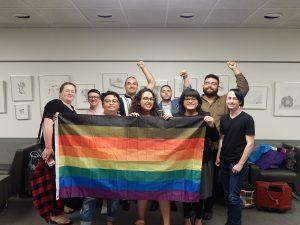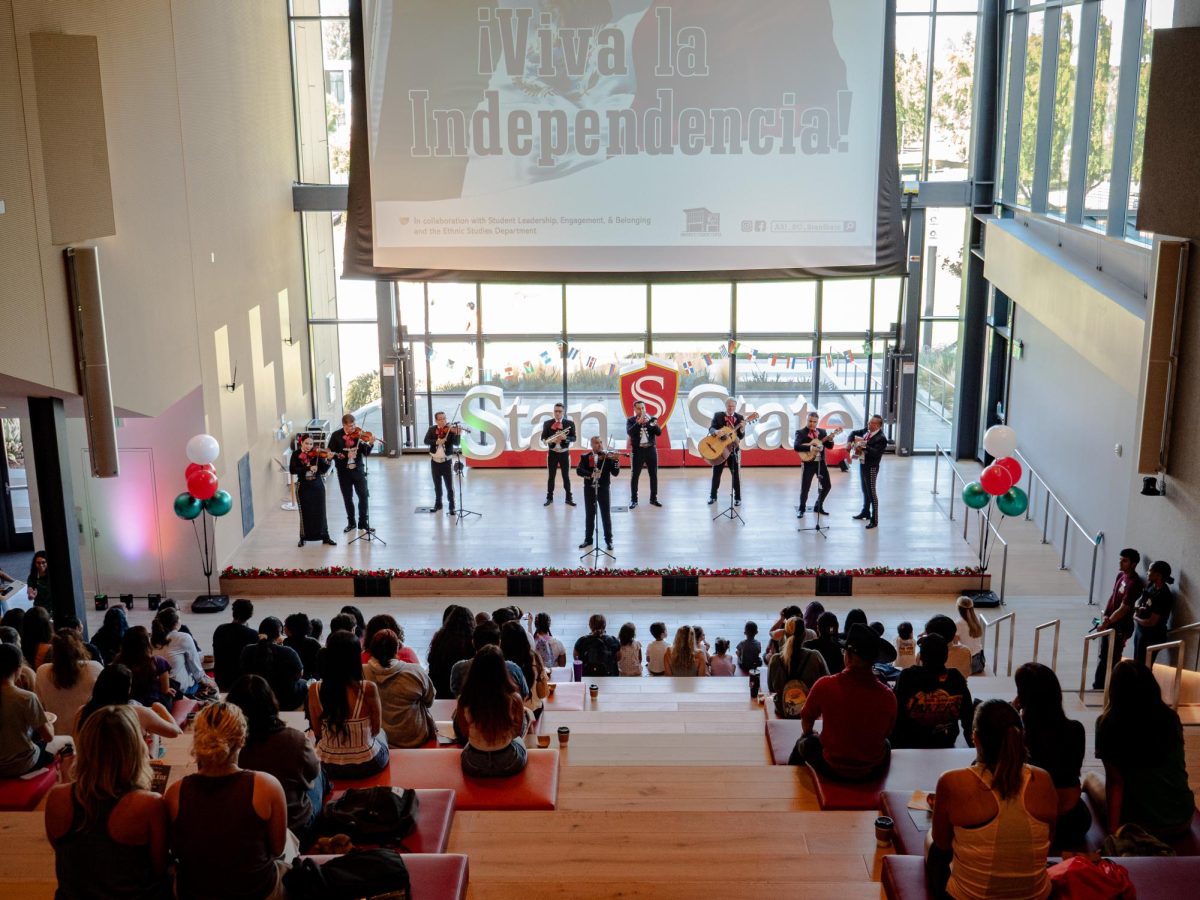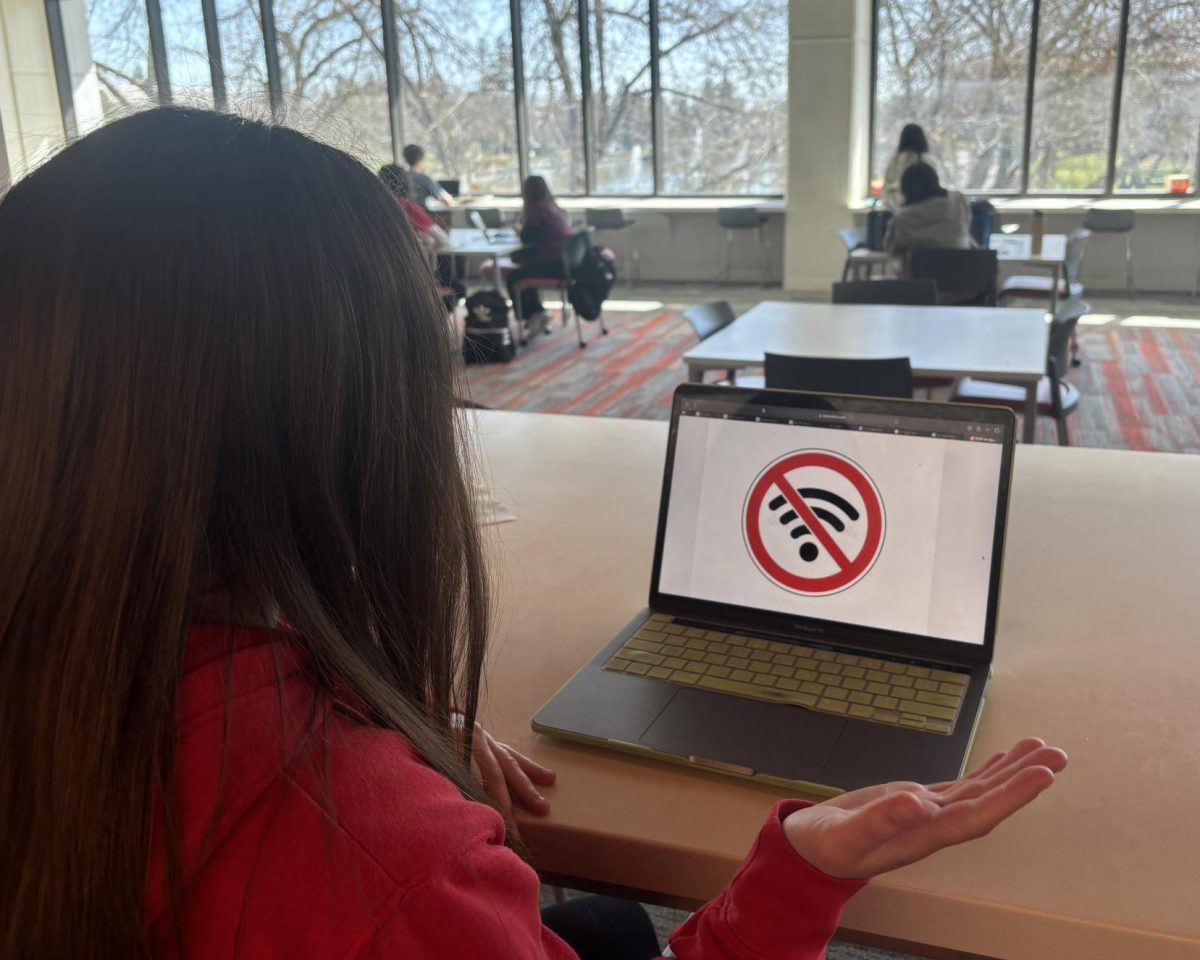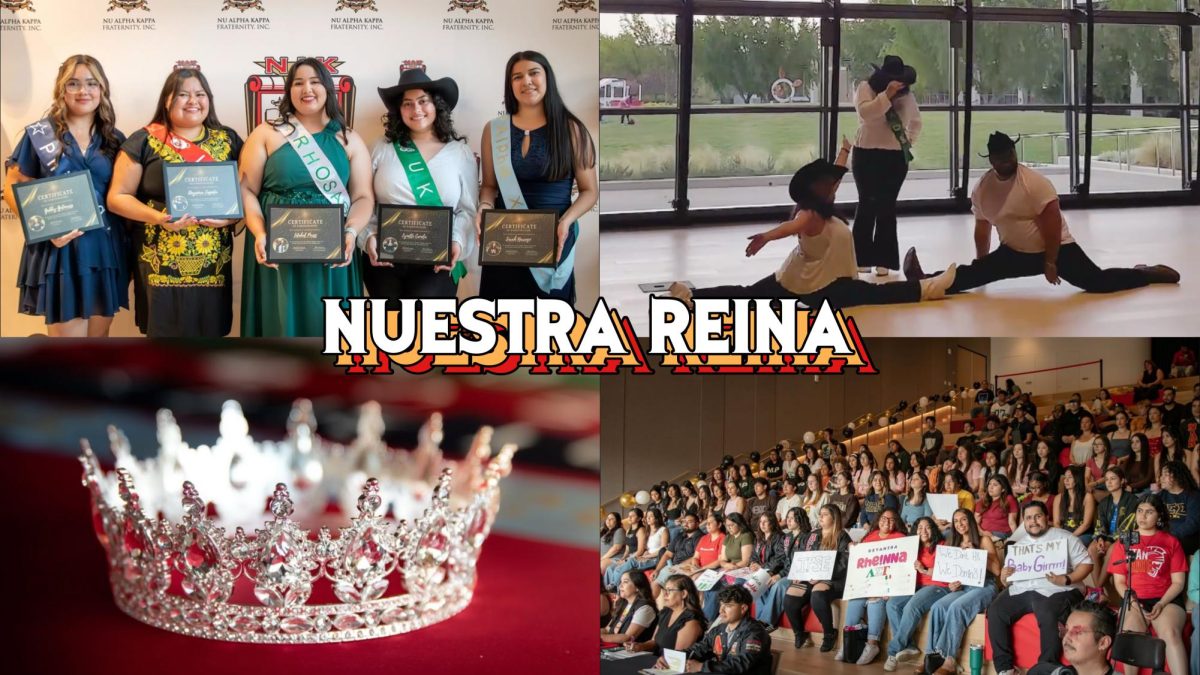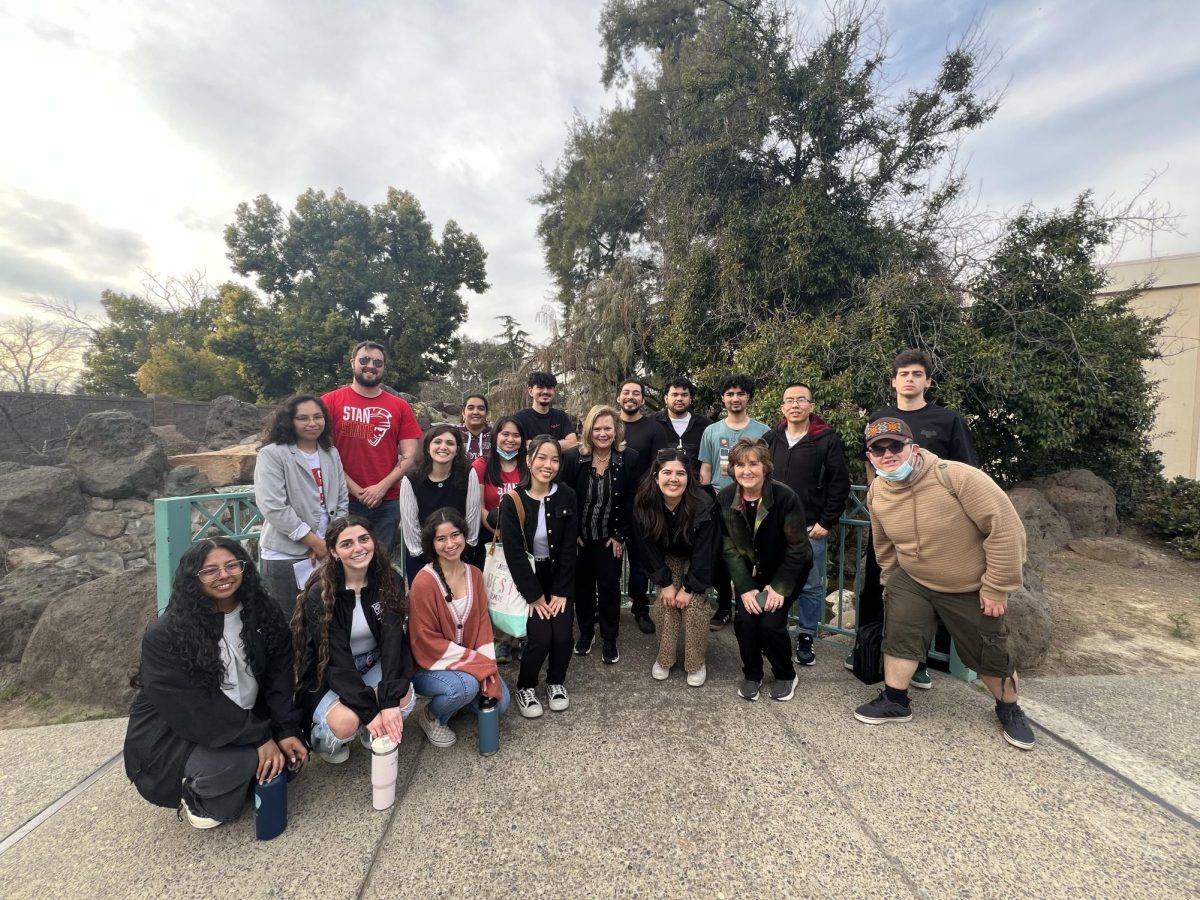Stan State is located in a very conservative area, which is not always welcoming to the LGBTQ+ community. The surrounding community climate paired with the fact that many students possess multiple disadvantages, can cause students to feel uncomfortable with displaying who they truly are.
Fortunately, there is a new club on campus that helps members of the LGBTQ+ community deal with the pressure of being able to come out and other issues pertaining to intersectionality. That club is known as Queer and Trans People of Color, also known as QTPOC (pronounced cutie-pock).
Jordan Alvarado (junior, Psychology/Ethnic Studies), a member of QTPOC, said that the club’s mission statement is to overall provide a place for solidarity and support for marginalized communities. “Our mission statement is we need to carve a space for solidarity, healing and communal care across multiple oppressions. Our most constant goal is to provide a space of unparalleled support for the most marginalized communities that are not discussed,” Alvarado said.
QTPOC has only been around since the beginning of this spring semester, but members are making strides to support the community through empowerment and social activities.
“We do things like the healing circle, social meetings, game nights spelled ‘gayme’ night. We have stuff outside of the school. We go to Rainbow Prom and things like that. Doing things outside of the space because being in an academic setting can be really triggering and not as freeing as being outside with the community,” Deion Jackson (sophomore, Sociology/Ethnic Studies), a Modesto Junior College student and QTPOC member, said.
The club helps students deal with intersectionality. Many of its members are people from multiple disadvantages and marginalized communities. Many of the students come from various backgrounds including, but not limited to, ethnicity, religion, disability, immigration status and the list goes on.
“I think for me, as a black person, coming from a religious background, being black, queer and trans is not ok. Especially if you come from a queer background. You can’t do that. It can be really difficult, but having community can be really liberating and empowering,” Jackson said.
Often growing up in a religious background can be confining for people in the LGBTQ+ community. Although religion can be empowering, many use religion as a tool of oppression.
“I come from a Roman Catholic background. Religion is also a tool of colonization that forces the binary of forcing people to either be male or female. Often that binary system doesn’t allow for multiplicity and allow multiple identities and marginalizations to be validated,” Aleta Mascorro (senior, Ethnic Studies/Theater), a QTPOC member, said.
“Often we don’t think about it, but it is a form of oppression that we don’t consider. Everyone can have their own religious or spiritual background or opinion. At the end of the day when your views erase or oppress entire communities then you might want to rethink what that means,” Mascorro said.
According to Stan State demographics, 75 percent of the student population are from underrepresented communities. This is not reflective of the faculty at Stan State, which has less faculty of color. This can cause a breakdown in how faculty and students connect with one another.
“Being that Stan is a historically Hispanic serving institution, given that the majority of the population [are] female students of color, when you pair that with the interesting questionable number of white male cis[gender]-dominated faculty, staff and administration, we kind of perpetuate this constant cycle of colonization indirectly,” Mascorro added.
Often these faculty are not educated about multiple disadvantages that students of color face on campus and therefore may not be able to fully help their students.
“It perpetuates that disconnect definitely when there is a power dynamic between the faculty and the students. How much agency do the students have when they can’t communicate with faculty who they can resonate with? Right now, in Ethnic Studies, there are four full time professors of color,” Alvarado said.
There is also Love Evolution that also strives to help students of the LGBTQ+ community. The president of Love Evolution is Benjamin Zamora (senior, Gender Studies/Psychology).
“There is a lot of support of faculty and administration for student clubs. There are also some who say they are but that is to be expected, given the demographic of the area. There is always going to be people who think diversity should include most people but not ‘those’ types of people,” Zamora said.
Coming out can be difficult for anyone. For students of color, there are multiple dynamics that add to this.
“In my first few months of being out on campus I felt I had to be passable. That really affected my way of being seen and validated as a woman. In reality if you’re a woman, then you’re a woman,” Mascorro said while discussing her coming out process as a transgender woman.
Many people of color are family-orientated which plays a role when coming out. Alvarado describes it as a revolving door for people of color.
“It’s not a closet, it’s more like a revolving door. Especially when a lot of people of color are very family-centric, very communal. This very western-centric view of individualism is a lot of pressure. I notice for a lot of folks of color it’s kind of more of a thing you do for your family instead of for yourself,” Alvarado said.
Coming out is for yourself and not for everyone else. For people of color, coming out is especially challenging due to upbringing and disadvantages.
“Within western culture, coming out is prioritized as this celebration and expression of self. We see it through a white capitalistic lens, versus people of color who don’t have that luxury,” Alvarado said.
The media also plays a role in how queer and transgender people are viewed in today’s society.
“We often see trans people on the jerry springer show being depicted as men in dresses. That’s not healthy, as well as queer folks who are stigmatized in a way that does not allow for liberation. Having these issues interpreted through a white lens is really damaging to the community,” Mascorro said.
This is why it is important to have people in the media come out and be examples and advocates for the rest of the community. Singer and actress Janelle Monae recently came out as pansexual. Many people do not know what this means, nor do they understand the differences in gender status or sexual orientations.
“I identify as pansexual. It’s not strictly limited to male or female. I view my identity despite their genitals or gender,” Jackson said.
There are many organizations that are here to help educate and empower the community, such as local pride centers, in addition to organizations on campus. These groups also strive to change the social climate in the Central Valley as it relates to the LGBTQ+ community.
“The social climate can be changed by continuing to fight for acceptance and take advantage of teachable moments. Not judging someone because they don’t know what something is, instead inform them. Getting involved in community projects that improve social climate, like campus clubs and progressing on to organizations off campus,” Zamora said.
If you are not a member of these communities, you can still be an ally. Anyone is welcome to participate in Love Evolution or QTPOC.


